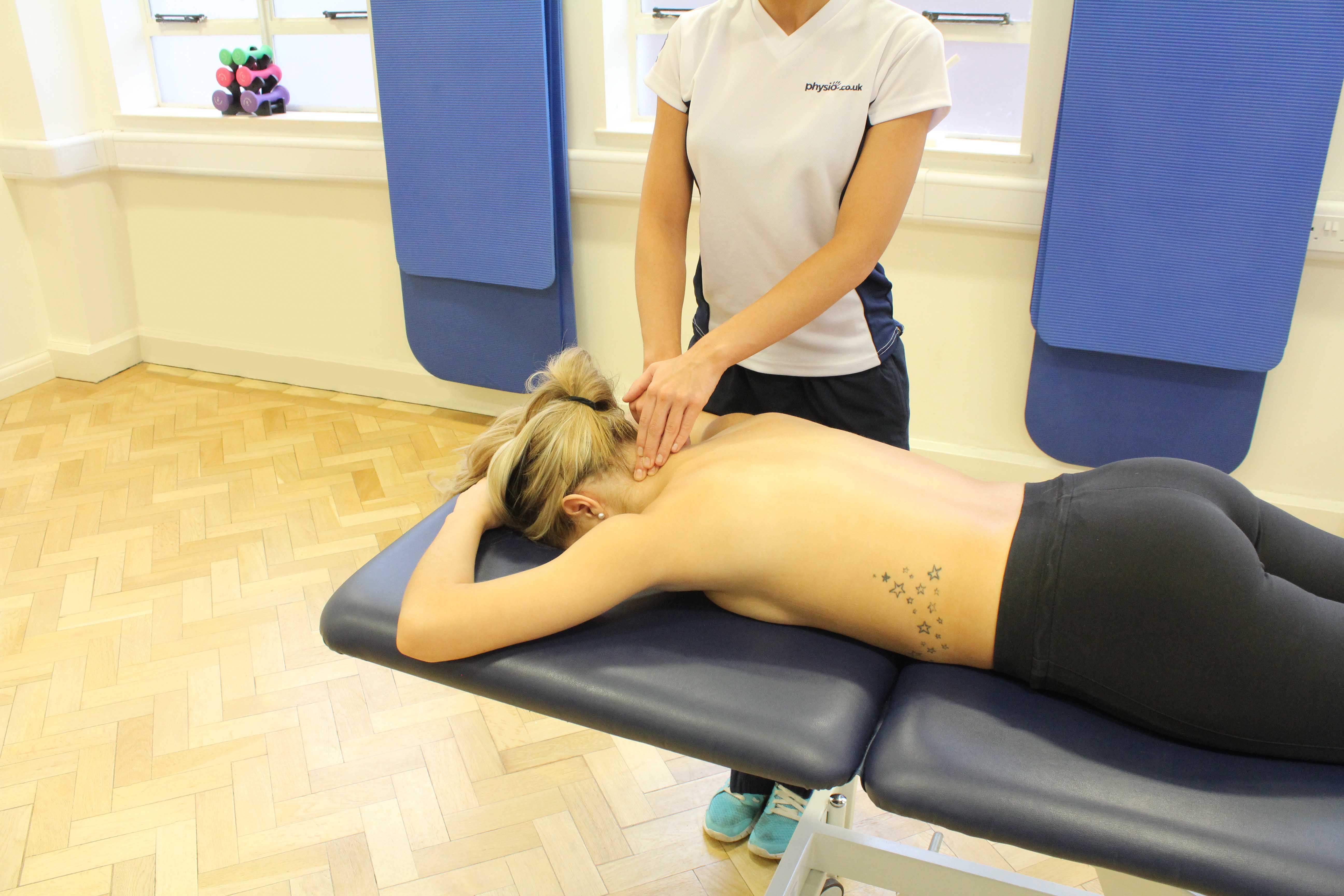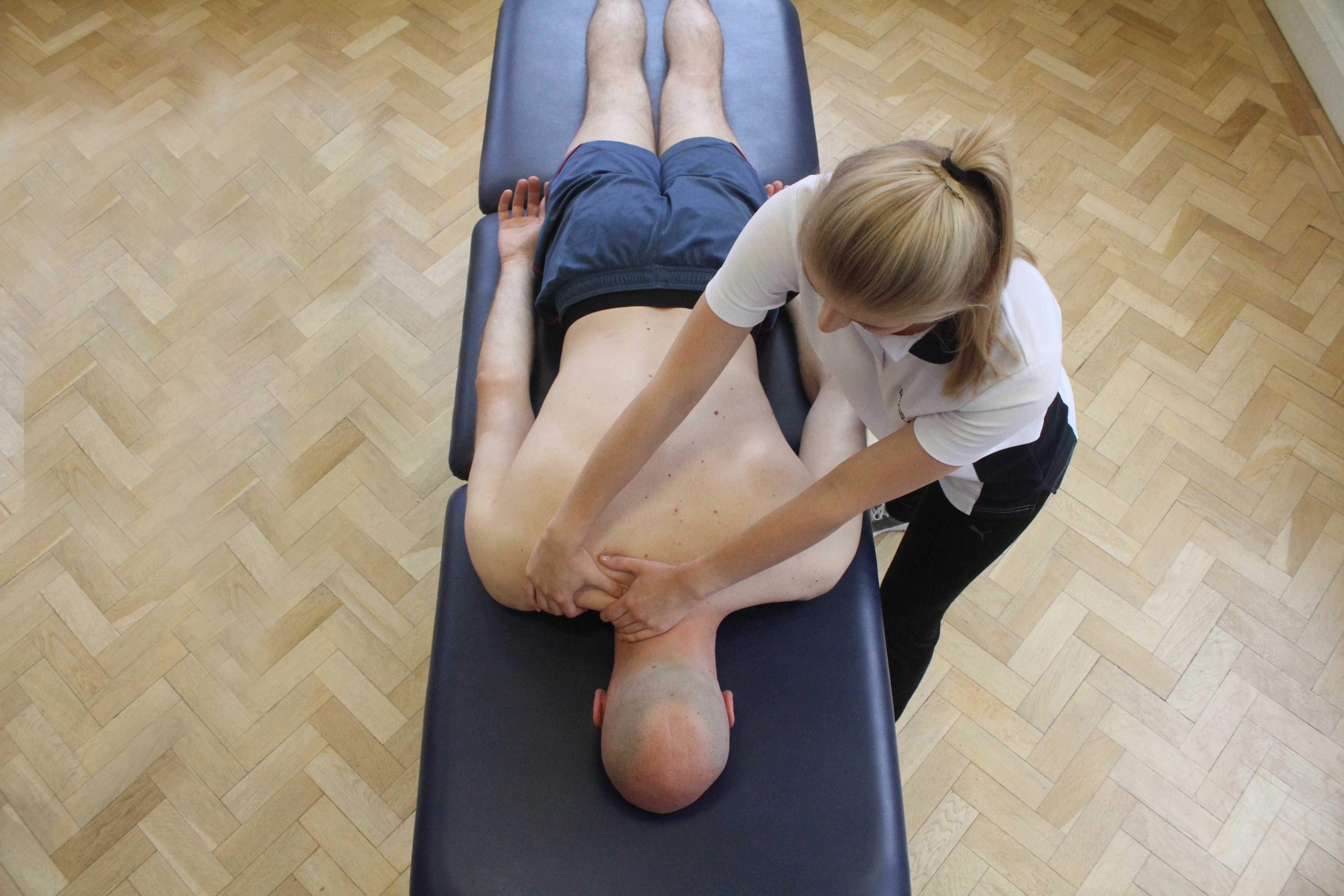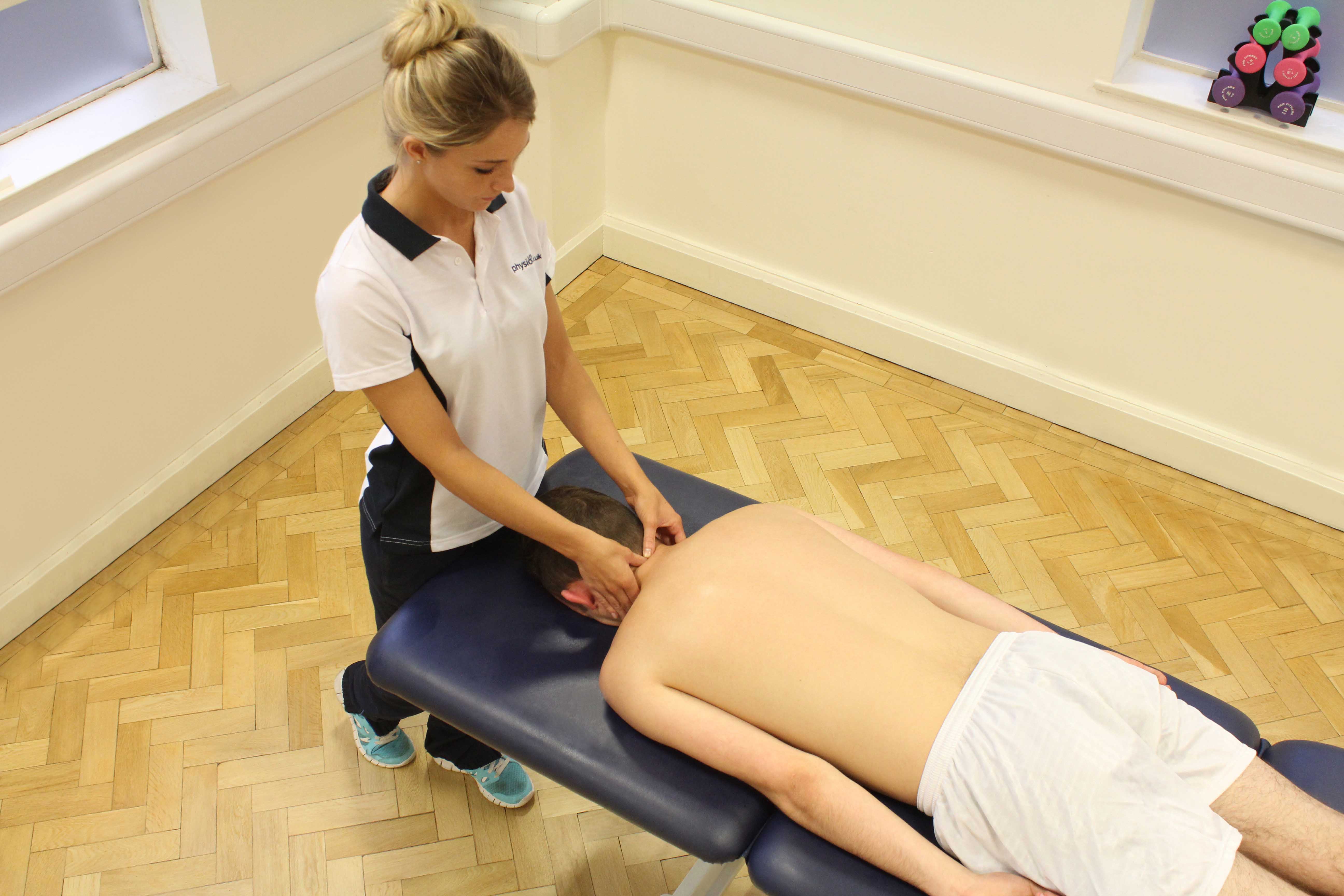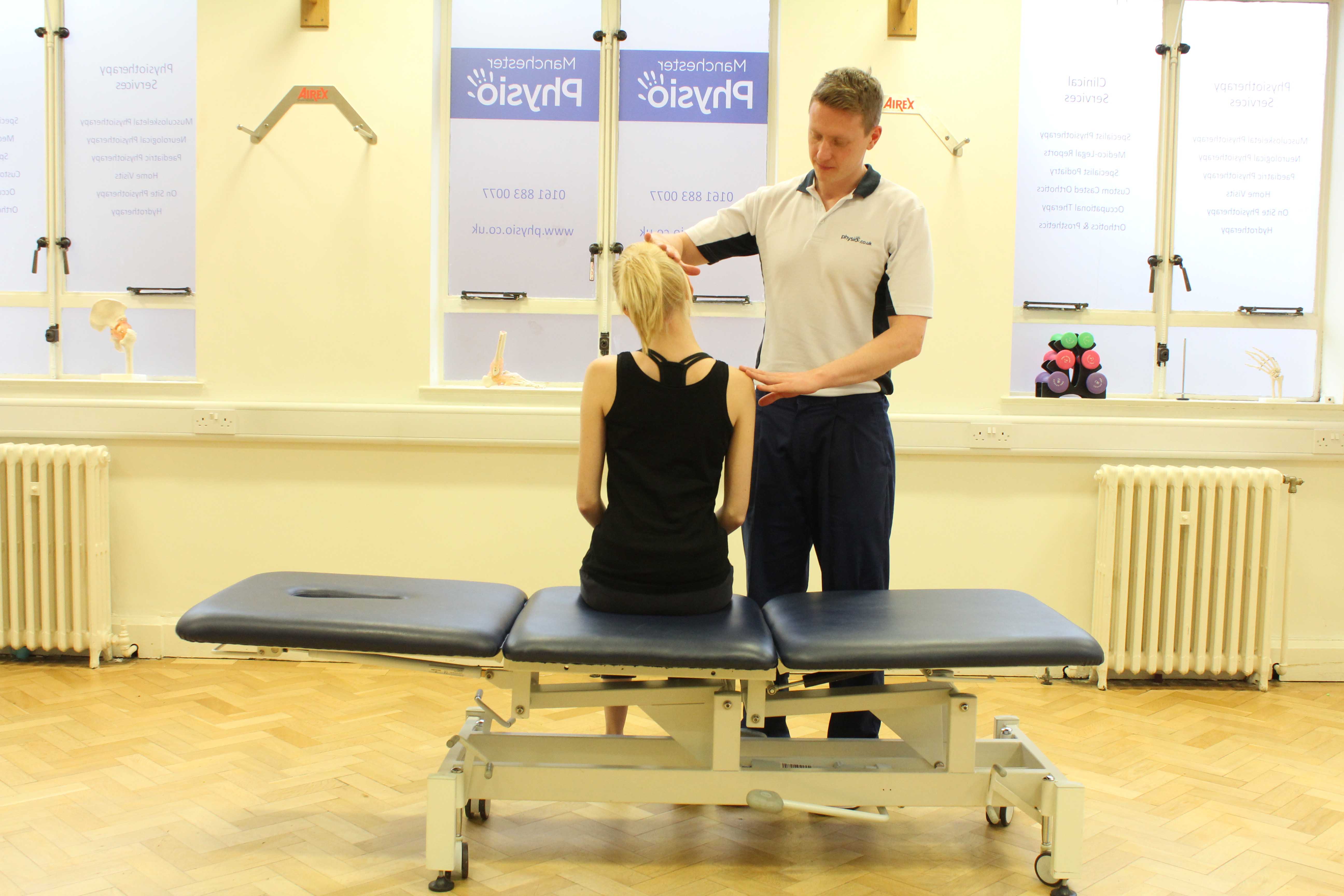What is a broken neck?
A broken neck is a fracture or dislocation of one or more of the seven bones (vertebrae) of the neck. A broken neck does not necessarily mean that there is spinal cord damage or injury. However this can only be determined by a suitable medical professional. A broken neck is very serious and potentially life threatening injury. If you suspect that someone may have fractured their neck they should only be moved by professionals. Physiotherapy is an effective way of providing rehabilitation for a broken neck.
 Above: Soft tissue massage and gentle mobilisations
Above: Soft tissue massage and gentle mobilisationsWhat causes a broken neck?
A neck fracture is normally caused by severe trauma to the neck. Examples include:
- Falls, such as from a horse or bike
- Collisions, such as motorcycle or automobile
- Diving into shallow water
- Severe and sudden twist to the neck
- Severe blows to the head or neck area
What are the symptoms of a broken neck?
A broken neck is usually caused by an accident or injury. The symptoms include:
 Above: Soft tissue massage and stretches applied to the muscles and connective tissues of the neck
Above: Soft tissue massage and stretches applied to the muscles and connective tissues of the neckWhat should I do if I have a broken neck?
If you suspect you may have a broken neck, you should visit your nearest accident and emergency department immediately. You will have an X-ray and possible other tests including MRI scans to confirm the exact diagnosis of your injury.
What shouldn’t I do if I have a broken neck?
Do not delay seeking professional advice as this could be very dangerous and cause further damage. If you suspect someone has a broken neck do NOT move them as this may cause more harm. Ring the emergency services on 999. Broken necks are delicate and need to be treated in the right way by a medical professional only.
Medical treatment for a broken neck
After a patient is diagnosed with a broken neck, the doctor will have to determine the best treatment depending on the type of break. Surgery is often considered to treat a fractured neck. The surgeon chooses the treatment method based on the severity of the fracture. For example, the fractured bones (vertebrae) may be fused to the healthy vertebrae next to it, or may be removed and replaced with a bone graft that is fused to the vertebrae on either side. Traction techniques may be used to help align the bones as they heal. Neck surgery is often complicated and the recovery process can be slow.
 Above: Mobilisations of the cervical vertebrea to relieve pain and stiffness
Above: Mobilisations of the cervical vertebrea to relieve pain and stiffnessPhysiotherapy treatment following a broken neck.
After full recovery, further rehabilitation and physiotherapy treatment should be sought as soon as possible. Potential physiotherapy treatments may include:
- Electrotherapy
- Exercise Programmes
- Massage
- Fracture Treatment
- Range of movement exercises
- Post Surgical Rehabilitation
Does a broken neck have any long-term effects?
A broken neck is a very serious injury and is likely to require a long period of rehabilitation. However, with a structured physiotherapy programme, there should be minimal long-term complications.
 Above: Experienced Physiotherapist conducting an assessment of the cervical spine, muscles and connective tissues in the neck
Above: Experienced Physiotherapist conducting an assessment of the cervical spine, muscles and connective tissues in the neckTo arrange a physiotherapy appointment call Physio.co.uk on 0330 088 7800 or book online..

 0330 088 7800
0330 088 7800


































